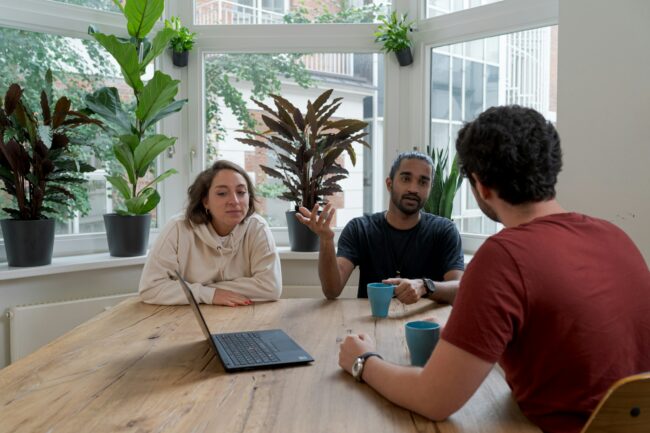For many businesses, the pandemic presented some real challenges, and no business was left untouched, including Google.
Google’s UX research labs were considerably impacted by the global events, and as a result despite being generously funded and carefully put together, were struggling in terms of its research flexibility and cost-efficiency.
It was with this challenge that Google approached Beings in order to help the household name to pivot to a more cost-effective, innovative and inclusive research methodology. This project “Cloud Lab” was an incredible success for both Google and Beings, earning industry recognition and has the potential to save in excess of $28 million.
The technology was recognised as “the future of research” but Google teams and the project lead won both an Internal Innovation Award, in addition to a promotion.
So how did the project come about?
The Challenge – Enhancing Research Capabilities
In a seven year period, over $100 million was invested by Google into building and maintaining its UX research labs across the world.
With the world effectively shut down during the 2020 pandemic, and many tried-and-tested UX research strategies permanently adjusted, Google found that usage of these facilities post-Covid was just 11.8%. This highlighted that in a different world, these were incredibly inefficient, in part due to the labs’ fixed locations. The location also meant that the participants were skewed, effectively creating silos within locations. This lack of diversity meant that research environments, particularly for comprehensive UX studies, were not ideal and did not provide the breadth and depth of participation required.
This also meant that there was a lack of consistency across different labs, with some researchers resorting to non-compliant tools, leading both to inefficiency but also security risks to valuable data.
Google, as a pioneer of technology and UX, realised that they needed a new solution to address these concerns. Their aims were:
- Increase the diversity of their UX research participant pool.
- Enable researchers to conduct studies in real-world environments outside the traditional lab.
- Modernise their research infrastructure.
- Reduce compliance and security risks associated with handling PII (Personally Identifiable Information).
- Unify and simplify a fragmented ecosystem of research tools.
The Solution – Studio UX by Beings
Google’s UX Infrastructure (UXI) team, led by Andrew Ferris, Senior Programme Manager linked up with Beings to overcome issues and accelerate the rate of UX research.
It was through various in-depth discussions, analysis and various iterations that Beings developed what would become known as Studio UX.
This cloud-based platform meant that researchers from Google could conduct interviews and UX studies anywhere in the world. This created a more flexible and secure environment for participants and researchers, along with additional flexibility without resorting to any third party tools.
The key features of Studio UX are:
- Accessibility: The technology functioned via a browser making it easy and fast to connect to from anywhere in the world. This meant seamless connectivity for participants and stakeholders.
- Mobility: A mobile app supports field studies, enabling researchers to gather data in diverse, real-world environments.
- Real-time Collaboration: The platform supports instant collaboration, eliminating delays and enhancing the research process.
- Customisable Video Layouts: Tailored video layouts for different research scenarios help researchers adapt to various study needs, whether they need to interact directly with participants or observe without interference.
- Secure Storage and Sharing: High-level security protocols ensure that video and data storage and sharing meet stringent compliance requirements.
- Integration: The platform integrates smoothly with Google’s existing infrastructure, enhancing usability and efficiency.
The Results – The Future Of Research
These features, and the results that they were able to demonstrate and deliver in the time following implementation, were disruptive.
Hailed as “the future of research” by the Google teams, it was transformative in its application to real-world UX research.
The results also led to:
-
- The promotion of Andrew Ferris, project lead, to Product Manager and who also received an Internal Innovation Reward.
- Google was able to save a projected $28 million in lab costs, freeing up budget from a reduction of 13,500 sq ft onsite research space. This included energy, lighting, transportation, logistics and many other costs that also have a direct impact on sustainability and a reduction in waste space.
- Finally, there was a huge increase in compliance and efficiency. Google now has a more collaborative, but tighter, research ecosystem. The structure is flexible, agile and can be adapted to various research needs without needing to compromise on security and data integrity.
Studio UX Leads To A Collaborative Future
The outcome of the collaborative efforts of Beings and Google shows just how simple innovation can be transformative, even in the most complex of situations.
Studio UX has both met, and exceeded, expectations about what can be done to improve the efficiency of UX research. It sets a standard and baseline for the future of innovation, and what can be achieved when you remove limiting factors.
Google is, and remains, at the forefront of UX research and innovation in technology, as a result of the project with Beings.
While Studio UX is a bespoke solution that was created for Google, Beings also offers ready-made solutions for companies and agencies to change the efficiency of their UX and market research.
For more information or insights on how Beings can transform your internal research capabilities, reach out today for a demonstration of the platform and a discussion about your needs and requirements.



